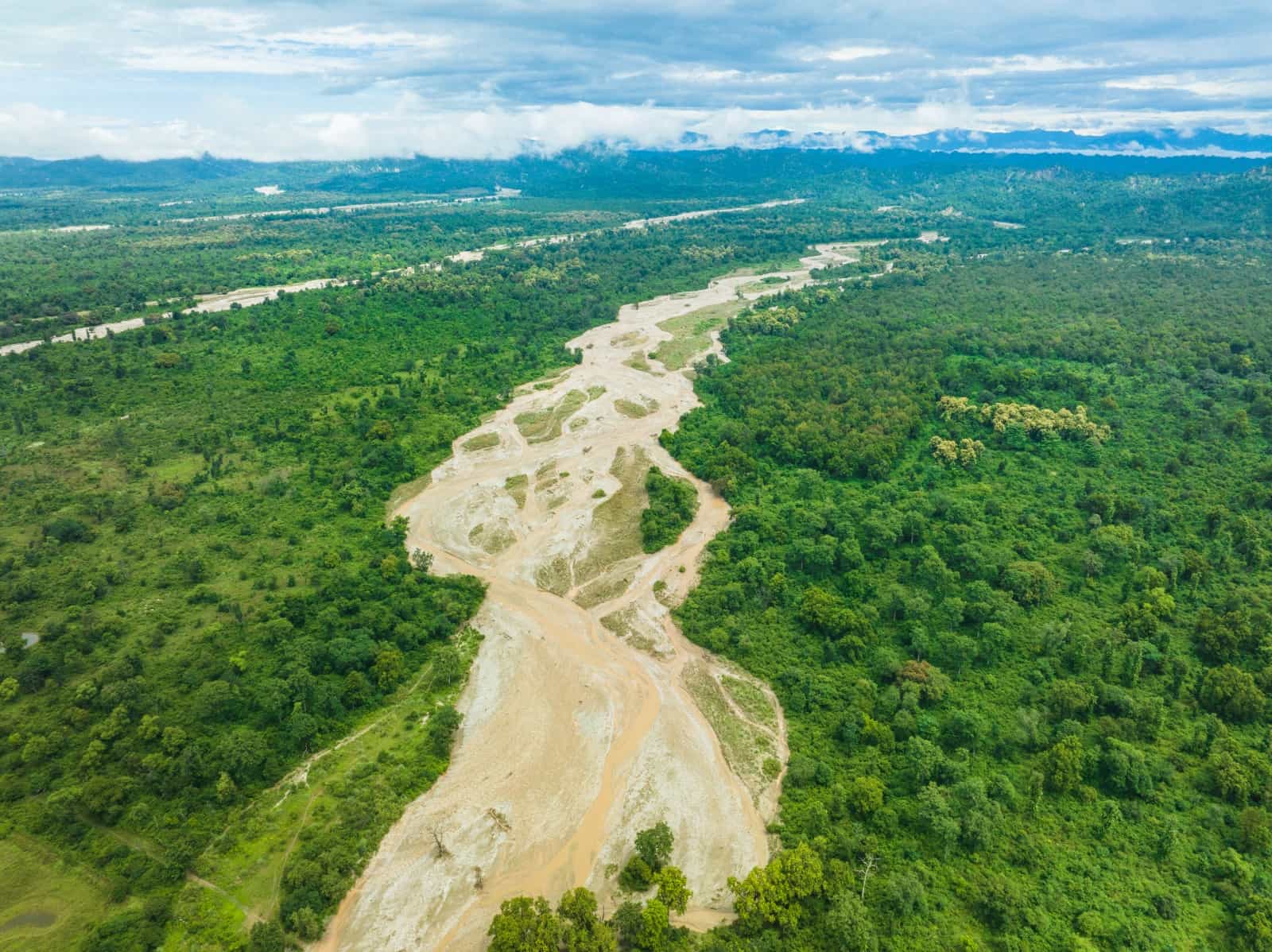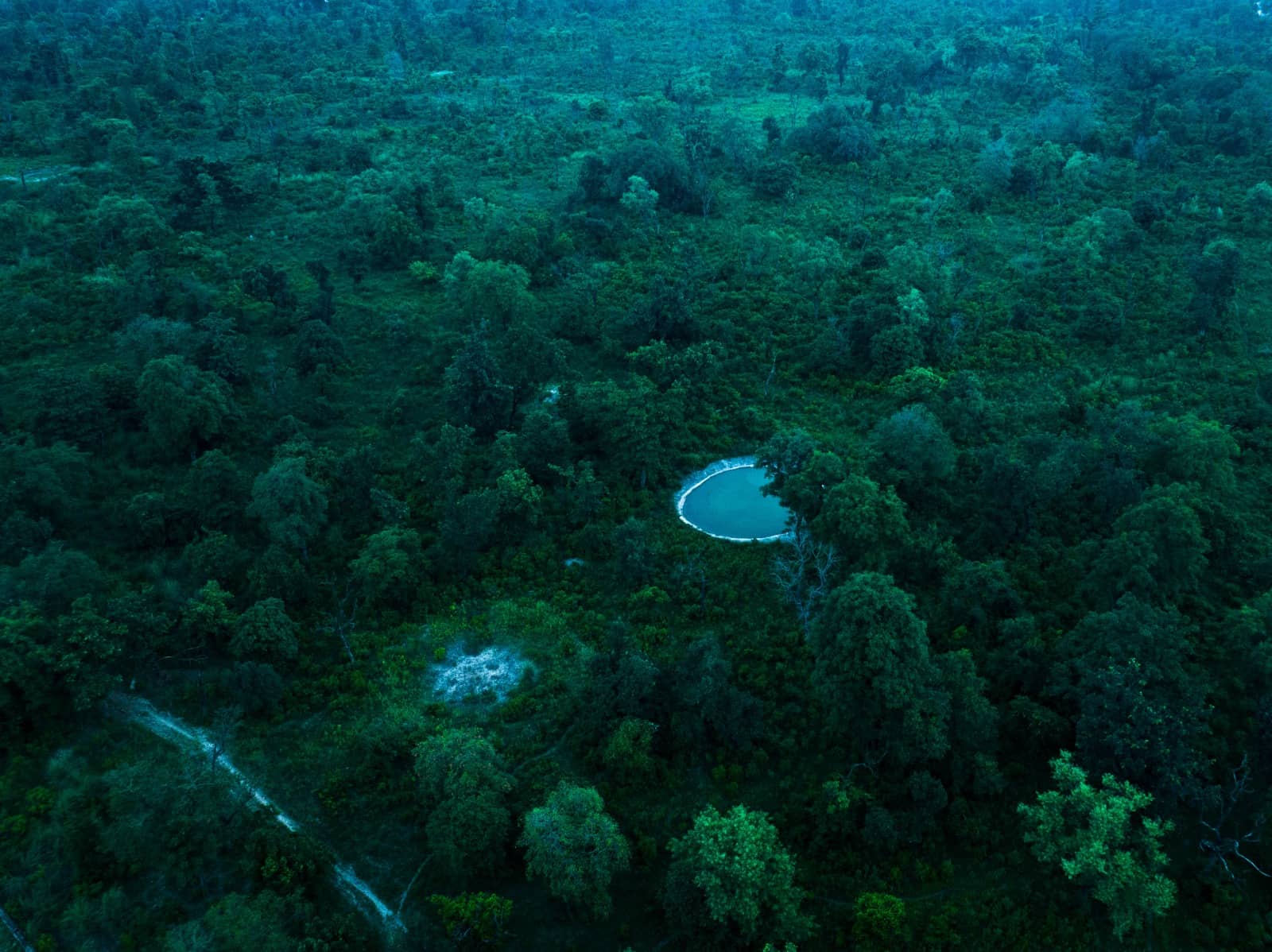How do you usually wake up in the morning? Is it the doorbell, an alarm, or perhaps a family member? Now, imagine waking up to the calls of a cheetah or a sambar deer instead!
Jai Dhar Gupta experiences this every day at his biosphere in Uttarakhand, nestled in the Shivalik foothills, overlooking the stunning Raghati river. At the Rajaji Raghati biosphere, all you need to do is sit on a rock and watch as cheetahs, elephants, and leopards pass by, while the air is filled with the sounds of chirping birds and buzzing insects.
Sounds idyllic, doesn’t it? This 32-acre biosphere, located within Rajaji National Park in Uttarakhand, is the brainchild of Jai, a 52-year-old environmentalist and entrepreneur.
Inspired by the movie Avatar, Jai dreamed of living in a place like Pandora. For his 50th birthday, he turned that dream into reality — not on a distant moon, but just four hours from Delhi.
Jai’s vision for the biosphere was ambitious: to create a thriving, self-sustaining ecosystem that could serve as a model for rewilding efforts across the country. To bring this vision to life, he collaborated with Vijay Dhasmana, a renowned rewilding expert.

Together, they embarked on a challenging yet rewarding journey, transforming former agricultural land into a flourishing forest by removing non-native species. Their goal was simple: to create a forest exactly as nature intended.
Not only have they succeeded, but they’ve exceeded expectations. Here’s how they created a biosphere where the carbon footprint is minimal, time seems to stand still, and nature takes over.
‘Chowkidar’ of the forest
Jai completed his education in finance and environmental science at The Wharton School. After running successful businesses in the US, he returned to India in 2010 to continue his entrepreneurial journey.
An avid runner, he faced a major setback in 2013 when he was diagnosed with bronchial asthma while training for a marathon. This diagnosis, likely due to Delhi’s severe air pollution, ignited his passion for environmental issues. He became a leading advocate for air quality awareness, founding the citizen’s movement ‘Our Right To Breathe’.
His efforts led to his inclusion in the first Air Pollution Task Force established by the Delhi Government. This task force played a key role in launching Delhi’s landmark odd-even traffic initiative in 2015, aimed at reducing vehicular emissions.
His battle against air pollution also inspired him to create solutions through his venture, Nirvana Being.
While he continued to advocate for clean air, he came to the realisation that expecting significant improvements in Delhi’s air quality within his lifetime was unlikely. This prompted him to seek out a place where both the air and quality of life would be better.
“I always dreamt of being a chowkidar (watchman) of the forests in India. I have no hope of better living conditions in Delhi or Mumbai. The air is toxic everywhere. I want to improve my own quality of life, and the way to do that is by living with nature,” Jai tells The Better India.
As a Delhi resident, he often visited the Rajaji Tiger Reserve, where he developed a deep affection for the wildlife. Naturally, when it came time to find a place to settle, he was drawn to the area that had become almost a second home to him over the past decade.

In 2021, he discovered a stunning piece of land nestled between the Rajaji Tiger Reserve and the Raghati river, complete with a breathtaking 300-metre-wide riverbed. This riverbed, when dry, serves as an elephant corridor and a hub of wildlife activity.
He says that being there feels like stepping into The Jungle Book, where you can watch animals in their natural habitat — preying, drinking, sleeping, and more.
A biosphere, he explains, is a micro-environment. “It’s a zone of life. We’ve got the tiger reserve next to us, but it’s not pure, due to the invasion of non-native species like eucalyptus trees. We are working on creating a pure environment, growing only what nature intended for in this particular area,” he says, adding, “I’m chasing what we saw in that movie Avatar.”
Let’s reconnect with nature
After acquiring the land, which was then covered in a eucalyptus forest — a non-native species — the major challenge was rewilding it. “Since the land was used for agricultural purposes, it had been flattened and had some 5,000 eucalyptus trees. These trees would dry up the groundwater and wetlands as they didn’t belong to this area,” adds Jai.

Jai and Vijay surveyed the nearby area of the Rajaji Tiger Reserve and National Park together, identifying 62 native tree species that were on the brink of disappearing. The project began with the collection of seeds and the painstaking process of planting saplings of these endangered species.
Vijay, who has been in the rewilding and wildlife restoration space for over 20 years and majorly works on government projects, had an interesting task up his sleeve. He states that there is just a wall that separates the biosphere from the Rajaji National Park. The idea was to get a slice of Rajaji into this land, which had been altered by humans for their use.
The first task was removing the eucalyptus trees. The second task was creating natural contours that existed earlier.
“The first monsoon that I experienced was really horrifying. I found that the rainwater was tapering away towards the river. Nothing was being retained in the land. The rain was taking away my topsoil too,” says Vijay, adding, “On a war footing, we created the natural contours that existed to ensure that rainwater recharges our land. We are working on creating magic, every day.”
Elaborating on how they worked on rewilding the land, he says that they took cues from the forest next door. They observed the forest and the species that grew there and worked on recreating the broken linkages between different species and creating an interdependence between them.

Today, the Rajaji Raghati Biosphere is rich in biodiversity and home to 132 native plant species, including many that had all but disappeared from the region. Their efforts have also attracted a diverse array of wildlife — from leopards and elephants to an abundance of bird species — all of which are now regular visitors to the biosphere.
“The saplings are now about six feet high, and when you walk, you feel like you’re walking on a carpet. We have two leopards and elephants who visit regularly. Earlier, when they would come down the corridor, they would stop and show signs of being upset. Now, they look at me as a part of their habitat. That’s when I realised that my vision of coexistence is coming true,” says Jai.
The biosphere operates under strict rules: vehicles and plastic are not allowed. The only exception is a single electric farm utility vehicle, which also serves as a silent safari vehicle, ensuring minimal disturbance to the animals. Visitors are not permitted to bring any plants or seeds into the biosphere. Every effort is made to avoid activities that contribute to a carbon footprint.
“The rule in this biosphere is that nature comes first, not humans,” says Jai.
There are two small homes on the property for overnight stays, built without cement and bricks, using prefabricated construction methods. Jai emphasises that this is not an eco-tourism spot but rather a model intended to inspire others who wish to rewild their own spaces. He has also written a white paper on the subject to raise awareness and motivate others to take similar action.
“I already feel like the richest person on the planet. I have created more wealth over the past 2.5 years than in the 50 years before that. One must realise that richness is not in our 30,000 sq ft mansions and apartments in cities. The richness lies in mental peace, which I’ve found. Most days, I’m not even walking, I’m levitating in the biosphere,” says Jai.
Vijay too adds that he has received calls from people across the country interested in replicating this initiative. The message the duo want to give out is clear as day — “Let’s go back to the simpler things and reconnect with nature.”
Edited by Pranita Bhat; Images Courtesy Jai Dhar Gupta
No comments:
Post a Comment